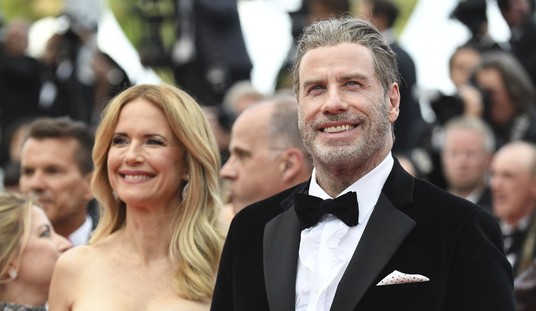Contrary to liberal belief, the patriarchy does not determine what you’re attracted to. While there is legitimate concern that the media’s promotion of female beauty standards can lead to eating disorders like anorexia and bulimia, the postmodern argument that standards of sexual attraction are environmentally produced, sexist, and unjustifiable utterly fails when confronted with scientific evidence.
“The standards of beauty that both women and men are attracted to … are evolved cues to virility and fertility, and hence, survival,” Reza Ziai, a lecturer in psychology at the City University of New York (CUNY), wrote in Areo Magazine. Contrary to many liberal thinkers, Ziai explained that sexual preference has more to do with biology than culture.
Ziai cited a study by the University of Michigan’s David M. Buss which evaluated 37 cultures in 33 countries, involving nearly 10,000 men and women. “Females were found to value cues to resource acquisition in potential mates and more highly than males,” Buss reported. “Characteristics signaling reproductive capacity were valued more by males than by females.”
Here’s the kicker: “These sex differences may reflect different evolutionary selection pressures on human males and females; they provide powerful cross-cultural evidence of current sex differences in reproductive strategies.” (emphasis added)
In general, heterosexual women prefer “a V-shaped torso on a slightly older guy with an abundance of resources,” while heterosexual men prefer “a young woman with a low waist to hip ratio (WHR) and long hair,” Ziai explained.
“Physical traits like a V-shaped torso in men and low WHR in women are cues to the opposite sex that signal the likelihood of offspring survival,” the CUNY lecturer wrote. “Just as it would have been an adaptive benefit to our ancestors to become disgusted by asymmetrical facial deformities in a potential partner, they would have also benefited from being able to detect the survival benefits that attractive physical traits in a partner would indicate.”
This evidence flies in the face of the liberal argument that environment — rather than biology — affects sexual preference. As Ziai argued, “By minimizing or ignoring the role that biology has on human nature, postmodernists can effectively blame all of the ills of the modern world on poorly designed laws, U.S. foreign policy, or Western cultural attitudes. Those who dissent from their view can be denounced as bigots and cast aside.”
Ziai noted that postmodernists attack evolutionary psychology (EP) for justifying sexist stereotypes. But EP seeks to explain things like sexual preference using the theory of evolution (microevolution, if you prefer). Any findings do not make such preference normative — they explain what was, not what ought to be.
With that in mind, the psychologist explained the feminist “structural powerlessness hypothesis,” which argues that women prefer men with more resources because women are oppressed. If this were true, “females in more egalitarian societies should equally prefer men who make the same amount of money or less than they do.”
But the data demonstrates otherwise. Ziai cited “carefully controlled experiments using a range of methods with diverse populations (including the Bakweri from Cameroon, successful women in the U.S., wealthy women in Spain, college graduates, women in Serbia, and online ethnographies).”
In these studies, women who had control of resources, and who were as wealthy if not wealthier than most men “persisted in preferring males with more resources than themselves.” Indeed, “a significant number of women who were very wealthy had an even stronger preference for wealthier men than average-earning women did.”
These results are damning for the “structural powerless hypothesis.” As Ziai argued, “if the reason women prefer men who make more money is because of discrimination then groups of women who are not in a position of powerlessness should not discriminate against males with less resources — but they reliably do.”
None of this is to say that women weren’t oppressed in previous times (and remain so in too many parts of the world). But the malign force of the “patriarchy” is not to blame for sexual preferences — basic biology is.
That said, environment does play a role in sexual preference, but not exactly in the way these feminists argue. Ziai noted that evolutionary psychology suggests that human are “biologically programmed to have a range of reactions in response to variations in ecology.”
In societies and cultures where diseases and parasites are more common, for instance, men and women are more likely to have “stereotypical” preferences, due to environmental threats to the survival of their children. But “in many modern societies (like most Western ones) where there are fewer chances for infections, human will often choose mates based on things like honesty, sense of humor, and common values.”
These preferences seem more personal — and more human — than biological traits like V-shaped chests and waist-to-hip ratios. They also strike Westerners as more fair, and that is one of the main reasons why feminists push for a society where sexual attraction is based more on these traits than on muscles and curves.
But if evolutionary psychology is correct (and it does not necessarily rely on the theory of macroevolution of humans from other primates to be true), our sexual preferences are to some extent biologically shaped and it is a fool’s errand to try to force men and women to find “non-traditional” body types more attractive.









Join the conversation as a VIP Member